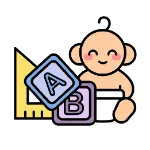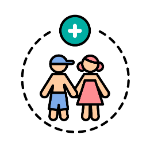
Parenting Challenges
These 8 Steps Help You To Handle Upset Toddlers
6 min read | Updated on 01-05-2022 by HappyPreggie
Research shows that children who are upset will express themselves in many ways, but mainly through temper tantrums. These tantrums can also be in various forms, ranging from whining and crying to screaming, kicking, hitting, and breath-holding. They are common in boys and girls and usually happen between the age of 1 to 3.

It is a normal toddler behaviour at that age as kids are much more capable than they were as babies. However, they still have little control over their communication skills to properly express their needs. These factors can cause a lot of frustration which will trigger their anger. Hence, as parents, it is important to know the causes of these feelings and how to handle them.
For many children, their social and emotional skills will usually start to develop at the age of 1 to 3 years old. They still haven’t learnt the words to express big emotions and might be testing out their growing independence. So temper tantrums are their main solution to convey and manage their feelings, at the same time, trying to understand or change what’s going on around them. In this case, several things that may cause temper tantrums are:

As children grow up, they will develop more coping and communication skills that can help relieve some anger triggers. They will learn to share, express their emotions, and do more with their growing capabilities. While it is not possible to speed up the ageing clock, there are several strategies that parents can use to help their toddlers manage and reduce tantrums.

When a child is having a tantrum, the first thing that parents should always do is ensure that they are not in danger of getting hurt or hurting others. Toddlers usually have little control over their bodies during a tantrum so it is important for parents to be alert. Relocate them to a safer place such as their bedroom if it is happening at home, or a quiet area away from cars and lots of traffic if it is occurring outside. Once the child is safely situated, consider these steps that can act as a lesson to them:

Having temper tantrums are one of the ways for a child or toddler to show their emotions during the developmental stage. Allowing them to reveal their feelings will help them understand their reactions and responses better as they grow up.
As they get older, most toddlers will normally grow out of tantrums and learn about patience by gaining more control over their communication skills. Until they reach that point, parents should always be aware of the steps that can be taken to help their child go through the frustration and anger. They can also lessen the tantrums by keeping a daily routine to spend more time with their child and help them relieve their feelings better. Communication is always the key to everything, including a peaceful household.
Want to read more? Check out how you can stop your child's gadget addiction and some simple ways to learn baby sign language to communicate with your infants.
(Image credits to Parents)
It is a normal toddler behaviour at that age as kids are much more capable than they were as babies. However, they still have little control over their communication skills to properly express their needs. These factors can cause a lot of frustration which will trigger their anger. Hence, as parents, it is important to know the causes of these feelings and how to handle them.
Why tantrums happen
For many children, their social and emotional skills will usually start to develop at the age of 1 to 3 years old. They still haven’t learnt the words to express big emotions and might be testing out their growing independence. So temper tantrums are their main solution to convey and manage their feelings, at the same time, trying to understand or change what’s going on around them. In this case, several things that may cause temper tantrums are:
(Image credits to AdobeStock)
- Temperament: It affects how some toddlers react to things that frustrate them. Children who get upset easily are more likely to have tantrums.
- Hunger, stress or tiredness: It influences children’s tendency to express and manage their feelings or behaviour.
- Frustrating situations: Things that may trigger their irritation, like getting their toys taken away or being forced to sleep early.
- Intense emotions: Feelings that can be overwhelming for little kids like worries, fear, shame, and anger.
How to handle them
As children grow up, they will develop more coping and communication skills that can help relieve some anger triggers. They will learn to share, express their emotions, and do more with their growing capabilities. While it is not possible to speed up the ageing clock, there are several strategies that parents can use to help their toddlers manage and reduce tantrums.
(Image credits to FunshineBlog)
When a child is having a tantrum, the first thing that parents should always do is ensure that they are not in danger of getting hurt or hurting others. Toddlers usually have little control over their bodies during a tantrum so it is important for parents to be alert. Relocate them to a safer place such as their bedroom if it is happening at home, or a quiet area away from cars and lots of traffic if it is occurring outside. Once the child is safely situated, consider these steps that can act as a lesson to them:
- Change the toddler’s location or move them to a quiet time-out if they are older than 2. Sometimes removing stimulation can help a child cools down faster.
- Ignore the behaviour and allow the child to let the tantrum run its course. If the tantrum is happening inside a moving car, consider pulling over until the child is calm. If it is happening out in public, letting them express their emotions is the best option to do.
- Get down to the child’s level and talk to them with a low, soothing voice while making eye contact. Distract the child with a book or a toy. This tends to work better if parents can distract them right as the tantrum is starting. Once they are in a full-on tantrum, this method may not work.
- Hold the child until they calm down. Depending on the severity of the tantrum, this may work best by getting on the floor and hugging them. That way, if they thrash out of the parents’ grasp, they will not fall or harm themselves.
- Set limits by talking to the toddler about the situation. This may work better with older children and parents may need to wait until the tantrum has subsided.
- Introduce humour into the situation, but never at the child’s expense. Try making a silly face or voice, or doing something else that they will enjoy.
- Talk to the child to validate their emotions and help them express their feelings. Let them know that it is alright to feel upset or frustrated.
- Avoid using strict measures to discipline an angry toddler. This can cause them to become more aggressive and could create more frustration.
(Image credits to SanDiegoNewsCentre)
Having temper tantrums are one of the ways for a child or toddler to show their emotions during the developmental stage. Allowing them to reveal their feelings will help them understand their reactions and responses better as they grow up.
As they get older, most toddlers will normally grow out of tantrums and learn about patience by gaining more control over their communication skills. Until they reach that point, parents should always be aware of the steps that can be taken to help their child go through the frustration and anger. They can also lessen the tantrums by keeping a daily routine to spend more time with their child and help them relieve their feelings better. Communication is always the key to everything, including a peaceful household.
Want to read more? Check out how you can stop your child's gadget addiction and some simple ways to learn baby sign language to communicate with your infants.
Join the largest support network for family health and well-being. Ready to get started?
Get started
















